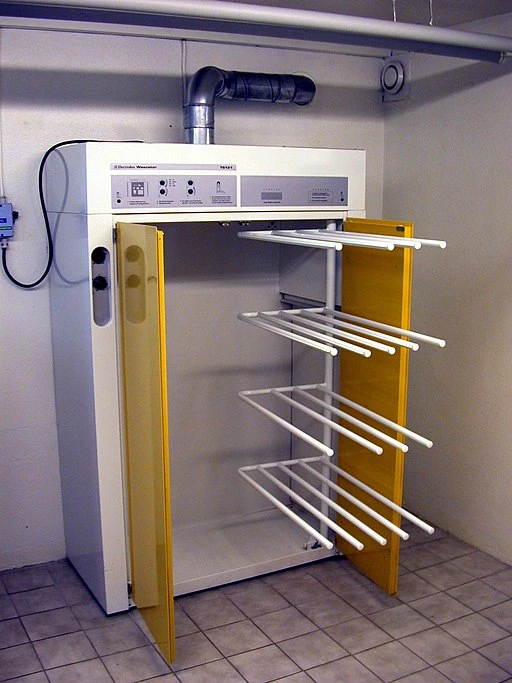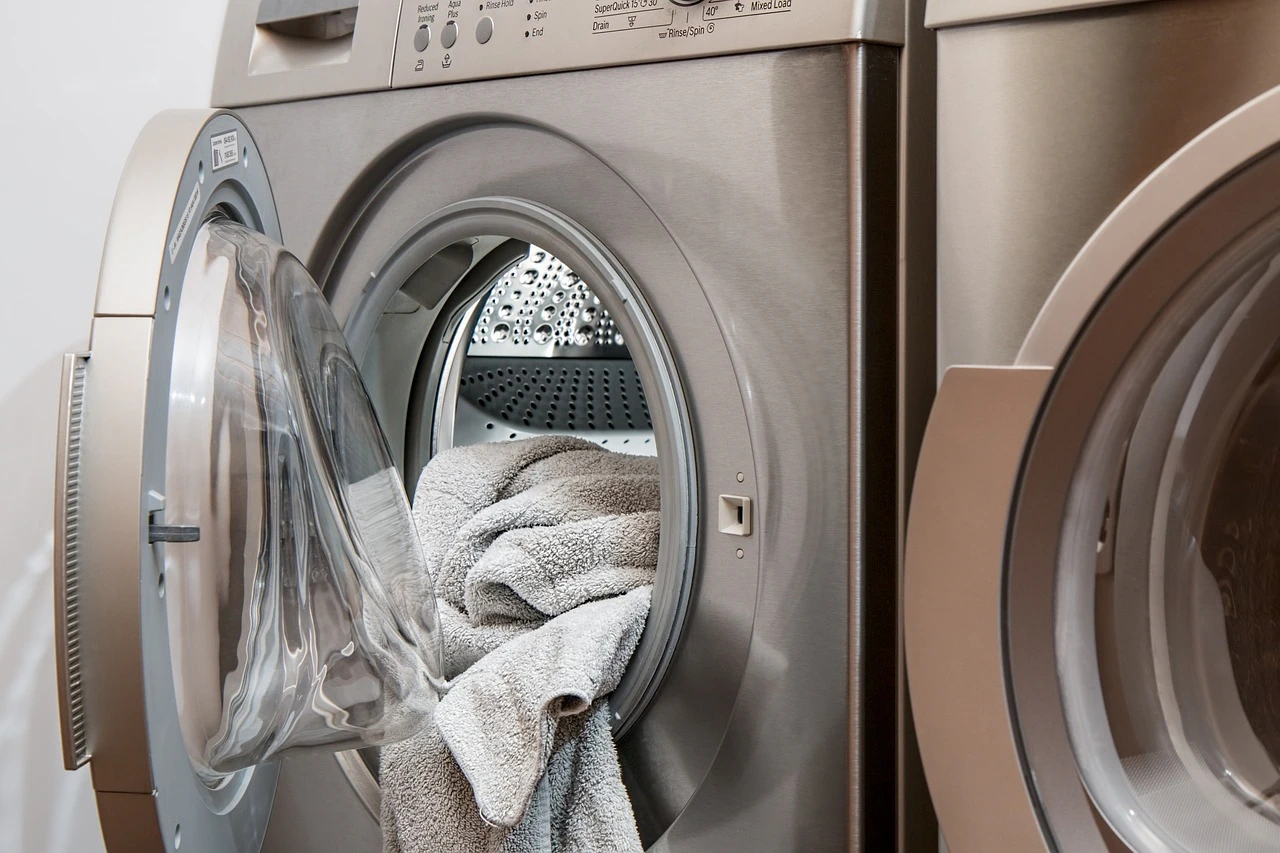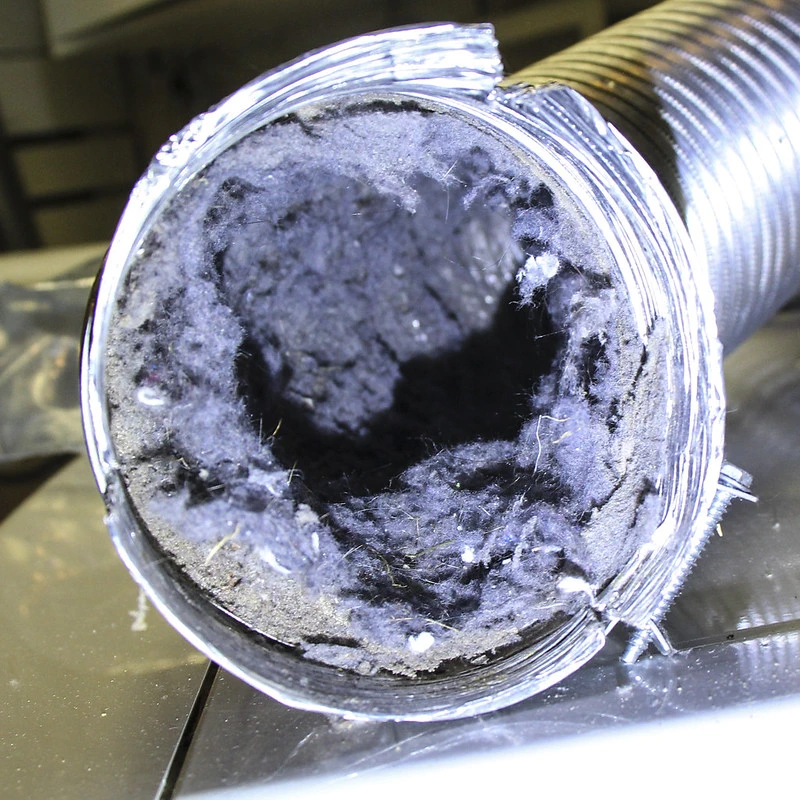Until a few years ago, it was a status symbol, a luxury for the few. Now the tumble dryer is becoming increasingly popular and for some it is now an indispensable household appliance. An object with a long history, it is evolving with increasingly advanced and efficient technologies. Let us learn more about this machine, its advantages and negative aspects.
A bit of history
As its name implies, the tumble dryer is a household appliance used to remove excess water after washing. Although it may seem like a recent product, it has a long history: the first crank-operated model appeared as early as the early 1800s, and in the mid-19th century the clothes mangle was introduced to wring out the laundry. In 1937 the first electric tumble dryer was patented, followed in 1940 by the first model with a door glass.
Here are the existing technologies, from simple or common ones to experimental ones:
Spin dryer
It is a drum that rotates at high speed (about 3000 rpm) to expel excess water. It cannot completely dry garments, but saves large laundries a great deal of time and energy.
Clothes dryer cabinet
Also called a convection dryer, it consists of a cabinet where clothes are hung or arranged on racks. A heat source at the bottom generates hot air that rises by convection or by means of a fan, passes through the clothes and is then expelled outside. The process is slow but relatively efficient, also allows shoes and other accessories to be dried, and does not damage fibres or delicate fabrics.

Solar dryer
Similar to the previous one, but it uses sunlight to heat the air without directly exposing clothes to sunlight. It is the simplest and most efficient technology but is time-consuming and weather-dependent.
Hot air tumble dryer
This is the traditional dryer. A fan pushes air through a heating element, where it heats up and decreases its relative humidity. The air passes through a rotating drum and is then expelled through an exhaust vent. This is then connected to a pipe that carries the humid air outside. Both electric and gas versions exist. Their energy efficiency is relatively low (3 to 9 kWh per load), but their low cost and reliability make them very popular.
Condensation dryer
This is a drum dryer, where the moist air instead of being discharged outside passes through an air-cooled condenser, which removes water vapour. The air is then passed through the heater and drum again, forming a closed circuit. Drying times are longer but energy efficiency is higher (approx. 2 kWh/load) and no exhaust piping is required. The water is either stored in a tank or discharged.
Heat pump dryer
A heat pump on one side heats the air sent to the basket, and on the other cools the condenser, which removes the water vapour. As in the previous model, there is no need for an air exhaust pipe; efficiency is very high (approx. 1 kWh/load).
Hybrid dryer
This appliance incorporates both a traditional heater and a heat pump. You can choose to use one or the other system, or both for faster drying.
Ultrasonic dryer
This is an experimental technology, which uses ultrasonic generators to remove water from fabrics. The atomised water escapes in the form of steam, similar to the table-top humidifiers we know. This dryer promises to reduce drying time to just 20 minutes, with very high efficiency, and without damaging the fibres.
Microwave dryer
The moisture in clothes is removed by radio frequency, the same principle used to heat food in microwave ovens. It is a quick and efficient system; however, since its invention in the early 1980s, it has never found widespread use: it cannot be used if the clothes have metal parts; moreover, it can develop electrical discharges in the fabrics, with the risk of damage or fire.
Steam compression dryer
This version is also currently being tested. Here, the laundry is heated to 100 °C to generate steam, which removes air from the circuit. Then the steam is compressed to remove some of the water and heat the remaining steam, which extracts more moisture from the garments in a kind of virtuous circle. The efficiency is equivalent to a heat pump model, but drying times are halved.
Whatever technology you choose for your tumble dryer, we have the right solution for you: the MyLaundry programme, thanks to its modular development and customisation, fits most tumble dryers on the market.

Advantages
- The first and most obvious advantage of these appliances is that they dry laundry quickly, even on cold and rainy days, without the laundry developing unpleasant odours.
- Secondly, the tumble dryer eliminates the need to use the often bulky and unsightly clothesline. Keeping the clothesline inside means increasing the humidity in the house and letting kitchen odours settle on the laundry. If we keep it outside, it can absorb smog, dust, and other dirt brought in by the wind or birds. It needs a private, safe place, sheltered from the rain, which is not always available.
- The tumble dryer also saves time, as clothes do not have to be laid out one by one.
- The dried laundry is softer and less wrinkled, so the ironing phase can often be avoided, thus saving additional time and a lot of electricity.
- In tropical countries or countries with more difficult hygienic conditions, the tumble dryer also has a further, sanitary advantage. Drying at a minimum temperature of 60 °C for thirty minutes kills many pests such as mites, bed bugs, scabies mites and ticks, helping to reduce their spread.
Points for consideration
- As a powerful appliance used for long periods of time, its main impact is on energy consumption.
- Its size, similar to that of a washing machine, requires additional space – a rarity in modern flats. This is why washer-dryers have appeared, household appliances that combine both functionalities.
- Open-circuit models, i.e. where hot, humid air is exhausted directly, require to be connected to the outside with an exhaust pipe to prevent mould and lint build-up in the form of dust. This connection is also mandatory for gas tumble dryers. In some homes, it is simply not possible to retrofit exhaust piping.
- Closed-circuit models recycle the air inside by condensing water vapour. This water ends up in a tank that must be emptied, or it must be connected to the household drains.
- Mechanical agitation of the garments causes the short fibres to detach; over time, the fabrics may therefore lose their softness. This lint is pushed by the air to the drain or into the internal circuit, where it accumulates. It must be removed periodically to avoid fire hazards and keep the system at full efficiency.

With MyLaundry and MySpace from Mastella you can transform your laundry room into a practical, beautiful and functional room.
Would you like to find out more about our laundry room furniture compositions and cabinets? Contact us for more information.


